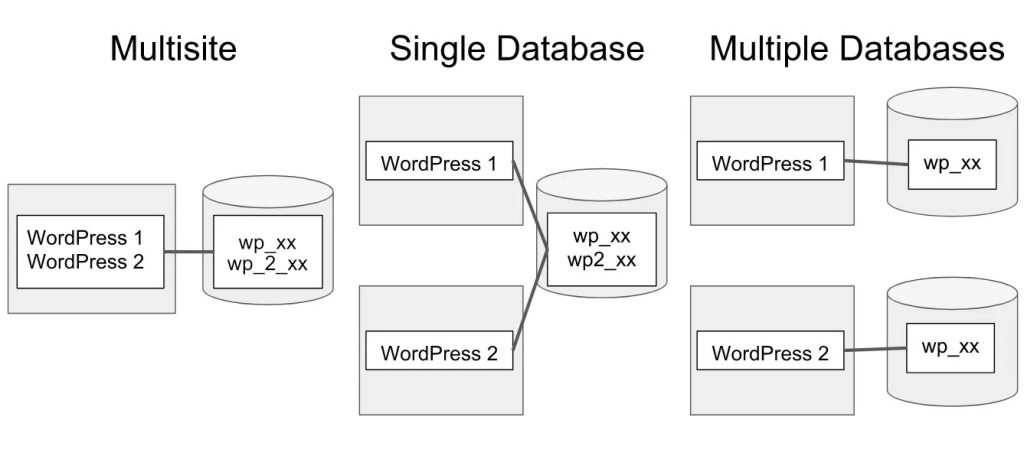Topics
If you need multiple WordPress instances, there are three types of installations based on system architecture, or a combination of WordPress instances and databases:
- WordPress Multisite feature: a single WordPress instance (with multiple sites created within the same WP instance) sharing a single database instance.
- Single Database: multiple WordPress instances sharing a single database instance.
- Multiple Databases: multiple WordPress instances with each instance using its own databases instance.

Let’s first look at the third type, multiple WordPress instances with multiple databases, because it has the same installation process as the single WordPress site except there are multiple sites.
Multiple WordPress Instances with Multiple Databases
You’ll need a separate MySQL database for each blog you plan to install. If you have not yet created these, basic instructions are found here.
The wp-config.php file will vary for each installation. The lines to change are the following:
define('DB_NAME', 'wordpress'); // The name of the database
define('DB_USER', 'username'); // Your MySQL username
define('DB_PASSWORD', 'password'); // ... and password
DB_NAME is the name of the individual database created for that blog. If you are using different user logins for each database, edit DB_USER and DB_PASSWORD to reflect this as well.
Upload each wp-config.php file to its specific root/installation directory, and run the installation. See Installing WordPress for more information.
The Multisite Feature
If you want multiple sites to use WordPress, you can use the multisite feature to create what is referred to as a network of sites. The multisite feature involves installing a single WordPress instance and a single database.
The multisite feature appears to be simpler than other types of multiple WordPress installations, but there are some considerations and restrictions. Refer to the following documents for more detailed information:
Multiple WordPress Instances with a Single Database
As with the multiple-database solution described above, the wp-config.php file will vary for each installation. In this case, however, only a single line is unique to each blog:
$table_prefix = 'wp_'; // example: 'wp_' or 'b2' or 'mylogin_'
By default, WordPress assigns the table prefix wp_ to its MySQL database tables, but this prefix can be anything you choose. This allows you to create unique identifiers for each blog in your database. For example, let’s say you have three blogs to set up, with the names Main, Projects, and Test. You should substitute the prefix wp_ in each blog’s
wp-config.php:
Main blog:
$table_prefix = 'main_';
Projects blog:
$table_prefix = 'projects_';
Test blog:
$table_prefix = 'test_';
As noted, you may use a prefix of your own making. Those provided here are for example only.
Upload each wp-config.php file to its specific root/installation directory, and run the installation. See Installing WordPress for more information.
Multiple Databases, Same Users
You can use the same userbase for all your blogs on the same domain by defining the CUSTOM_USER_TABLE and optionally the CUSTOM_USER_META_TABLE constants to point to the same wp_your_blog_users and wp_your_blog_usermeta tables.
See Editing wp-config.php/Custom User and Usermeta Tables.
Was this article helpful? How could it be improved?
You must be logged in to submit feedback.